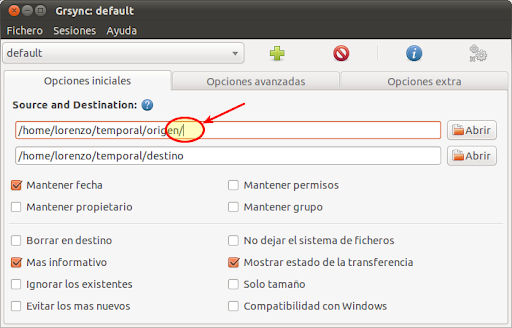

You can use the -P option to combine both of these features into a single flag. They will resume partial transfers in case a previous sync is interrupted, and show you the current transfer progress of all files, respectively. When using rsync for remote transfers, the -partial and -progress options are very helpful.$ rsync -av -e 'ssh -p 2200' /src/ rsync Examples This example assumes that SSH is running on port 2200. $ rsync -av -e ssh /src/ If the remote server is accepting SSH connections on a different port than the default (22), you can use the following command syntax to instruct rsync to connect to that port.
UBUNTU GRSYNC PASSWORD
You’ll be prompted for the SSH password after entering the command. Specify the remote SSH user and destination directory in the command as well. To run rsync through SSH, we can add the -e ssh option in our command. One of rsync’s most powerful features is that it can also be used with remote systems. Up until now, we’ve only been showing rsync examples that work for directories on the same system.

Rsync command exmaple using the –delete option $ rsync -avn -delete /src/ /dst/ This is especially a good idea if you’re also using the -delete option, since it will show you what files are going to be deleted.

UBUNTU GRSYNC SOFTWARE
Requirements, Conventions or Software Version Used Software Requirements and Linux Command Line Conventions Category Follow along on your own system if you have two directories that you’d like to keep in sync, and learn to master the rsync command.
UBUNTU GRSYNC HOW TO
In this guide, we’ll learn how to use the rsync command through examples. If you learn about rsync from the basics, it’s easy to wrap your head around. In reality, it can be very complex, but rsync only gets complicated when you need to do specific things. Many backup utilities use rsync in some form or another, because some users don’t bother to learn how to use the rsync command. This makes rsync work very well as a backup tool, on top of file copying. It’s also a very secure utility, utilizing SSH for remote file transfers. And when a file changes in the source directory, rsync can efficiently synchronize the contents to the destination directory, only transferring the bits that have changed.

In other words, it can take a source directory and make an identical destination directory. Some users mistakenly think of rsync as a file copying tool, like cp or scp.While there’s some overlap, rsync excels in synchronization, specifically. It’s built into nearly every Linux system by default and this tutorial will help you to understand rsync better by providing you most common rsync examples administrators use to keep the data synchronised across multiple server/hosts. Rsync stands for “remote sync” and is a powerful command line utility for synchronizing directories either on a local system or with remote machines.


 0 kommentar(er)
0 kommentar(er)
